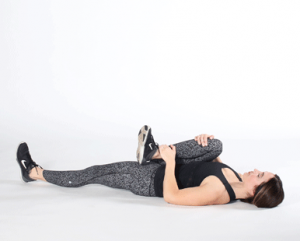
Repeated stresses can lower the efficiency of the musculoskeletal system, alter proper movement in the joints or reduce the elasticity of muscles and tendons, producing strain of ligaments and possibly irritation of nerves. It is possible that you may have ignored the signs of tiredness or even pain carrying on with your sport for too long without treatment, now to find yourself with a chronic injury.
Injury is not the only problem for professionals or amateur athletes. Many find that they reach a limit in their performance, not being able to improve further, however hard training they put in. Therefore, so many top athletes consult Chiropractors to help them improve the functional efficiency of their body. Whether it is a previously undetected spinal mechanical problem, or years of poor body mechanics, the resulting injury could potentially signal the end of a sporting career.
Whether you are an amateur sports enthusiast or a professional athlete, your body is prone to the same kind of injuries. It is common for Chiropractors to see athletes with:
- Hamstring and calf strains
- Achilles tendon injuries
- Groin and thigh sprains
- Neck and lower back pain
- Shoulder injuries
- Tennis elbow
- Tendonitis
Chiropractic care aims at correcting the underlying cause of the problem, rather than just the symptoms. The Chiropractor will perform a full evaluation of the functional state of the body, he/she will ask you questions regarding the details of your daily and sporting activities, your posture, lifestyle, and habits. He/she will then apply the necessary adjustments, in order to mobilize stiff joints or free any compressed nerves. This effective treatment is generally painless, although you may occasionally feel some short-term discomfort around the injured area. Treatment will normally be followed by a rehabilitation program to strengthen the muscles, improve your flexibility, and prevent future flare-ups.
Chiropractic treatment aims at restoring normal function to joints, muscles, and their relationship to the nerves, but may also increase body control, co-ordination and muscle strength.
Towards Wellness: Eat Well!
Eating well doesn’t only reduce the risk of physical health problems, like heart disease and diabetes, but it can also help with your sleeping patterns, energy levels, and your general health and wellbeing. You might have noticed that your mood can affect your appetite and food intake. A good balanced diet with less of the bad things (e.g. junk food and lots of sugars) and more of the good things (e.g. vegies, fruit, whole grains and plenty of water) will make sure you have all of the vitamins and minerals to help your body and brain function well.
S-T-R-E-T-C-H of the Month: Piriformis Stretch
- Lie on your back with both knees bent and your feet flat on the floor.
- Place your right ankle at the base of your left thigh.
- Place your hands behind your left thigh and pull up towards your chest until you feel a stretch.
- Hold this position for 1 to 3 minutes.
- Change and do the opposite side.

